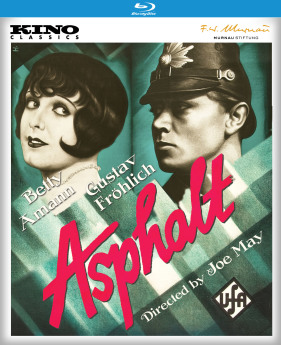Asphalt
Directed by Joe May
From the 35mm Restoration by the F.W. Murnau Foundation
From its elaborate and stylish opening scenes, Asphalt immediately establishes itself as a startling achievement. This unforgettable film is in many ways the perfect summation of German filmmaking in the silent era: a dazzling visual style, a psychological approach to its characters, and the ability to take a simple and essentially melodramatic story and turn it into something more complex and inherently cinematic. Although influenced by such classics as The Last Laugh and Berlin: Symphony of a Great City, Asphalt is a unique look at urban life and a classic in its own right.
Gustav Frahlich, best known as the young protagonist of Metropolis, stars as Holk, a strait-laced traffic cop who has the simple task of escorting a diamond thief to the police station. However, the thief is the exotic and beautiful Else (played by Betty Amann), which makes the task far from simple. The stage is thus set for a scandalous turn of events, and the drama is made all the more exciting thanks to the dynamic photography of Ganther Rittau (The Blue Angel) and the equally impressive sets of Erich Kettelhut (Metropolis).
Asphalt is directed by Joe May, a leading German filmmaker of the 1910s and 1920s who is also known for the two-part epic The Indian Tomb. In addition, he helped to launch the career of Fritz Lang. Like Lang, May later relocated to Hollywood, where he directed several classic B-films, most notably The Invisible Man Returns. But Asphalt remains perhaps his most famous, and some say greatest, work.
Reviews
"Asphalt" reveals a filmmaker of astonishing technical skills and a distinctive visual style, based on a use of raked sets to create a sense of precariousness and claustrophobia." Dave Kehr, The New York Times

